Build Your Own Garden Path: Easy DIY Ideas for Beautiful Backyard Walkways
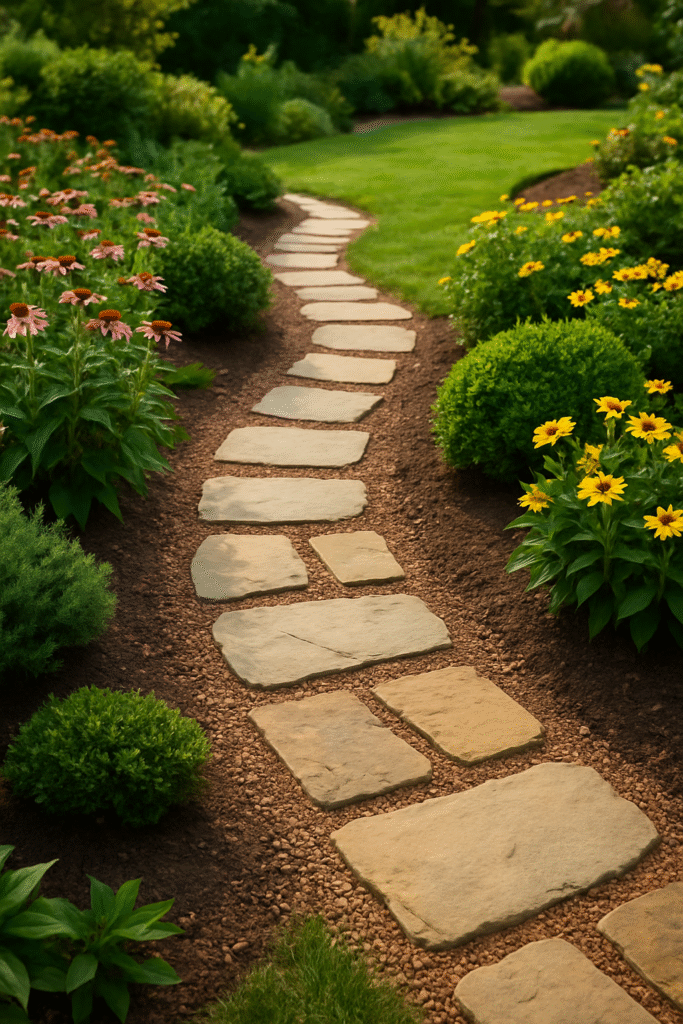
A garden path does more than guide your footsteps—it ties your outdoor space together. Whether you’re connecting a patio to a vegetable bed or creating a scenic walkway through your flowers, a path adds beauty, function, and structure to your yard.
The best part? You don’t need to hire a landscaper or spend a fortune. With a little planning and elbow grease, you can build your own garden path easily and affordably.
Here’s how.
Why Add a Garden Path?
Before we get into the how-to, let’s talk about why a garden path is a great DIY project:
- Protects your plants: Guides foot traffic and prevents trampling
- Defines your landscape: Adds visual interest and separates different garden zones
- Improves accessibility: Keeps your feet dry and clean, even after rain
- Adds charm: A simple path can turn your backyard into a peaceful retreat
Planning Your DIY Garden Path
A little planning makes the building process much easier. Here’s how to start:
1. Choose the Path Location
Think about:
- Natural walking routes—where do you usually step?
- Connecting key spots—link your patio, garden beds, compost area, or gate
- Curves vs. straight lines—curves feel relaxed; straight paths look formal
2. Measure and Mark the Path
- Use stakes and string, a garden hose, or even spray paint to outline your path.
- Width guide:
- 18–24 inches for a simple walking path
- 36 inches or more for main walkways
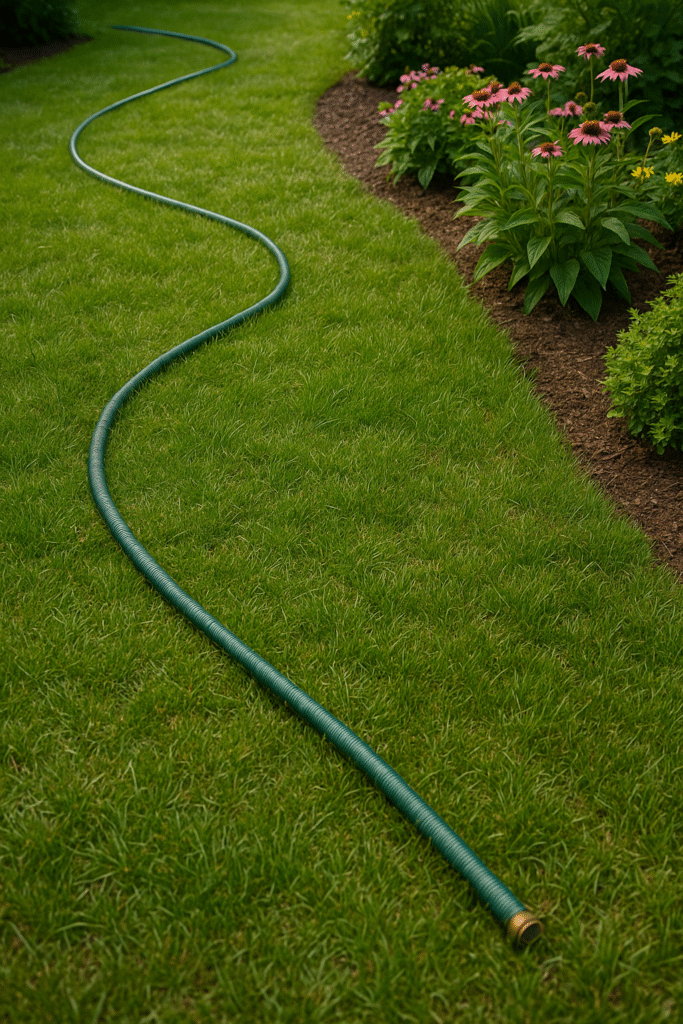
3. Select Your Materials
Choose based on your budget, style, and effort level:
- Gravel or crushed stone
- Mulch
- Stepping stones
- Bricks or pavers
- Recycled materials (concrete chunks, wood rounds, etc.)
Easy DIY Garden Path Options
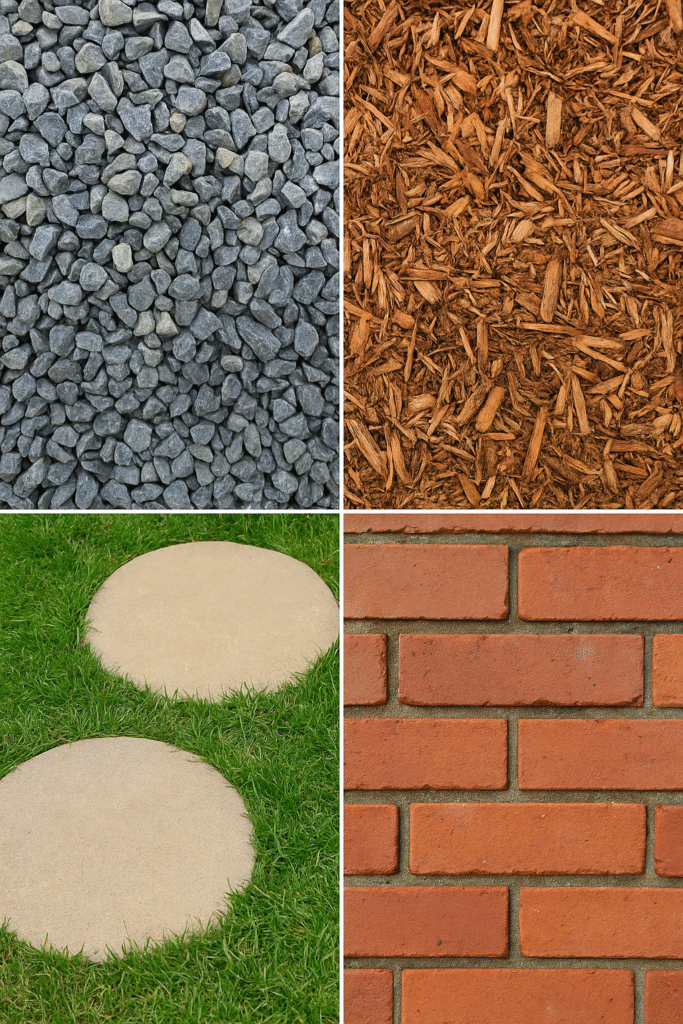
Let’s look at five easy ways to build a garden path:
1. Gravel or Crushed Stone Path
Why Choose It?
- Inexpensive
- Natural look
- Quick to install
How to Build It:
- Excavate 2–4 inches of soil
- Add landscape fabric to prevent weeds
- Fill with gravel or crushed stone
- Compact with a tamper or by walking on it
Tip: Use edging to keep the stones in place.
2. Mulch Path
Why Choose It?
- Soft to walk on
- Perfect for rustic or woodland gardens
- Budget-friendly
How to Build It:
- Remove grass or weeds
- Lay down landscape fabric
- Spread mulch evenly (2–3 inches thick)
Tip: Refresh the mulch every year or two.
3. Stepping Stone Path
Why Choose It?
- Decorative and charming
- Great for casual paths through lawns or flower beds
How to Build It:
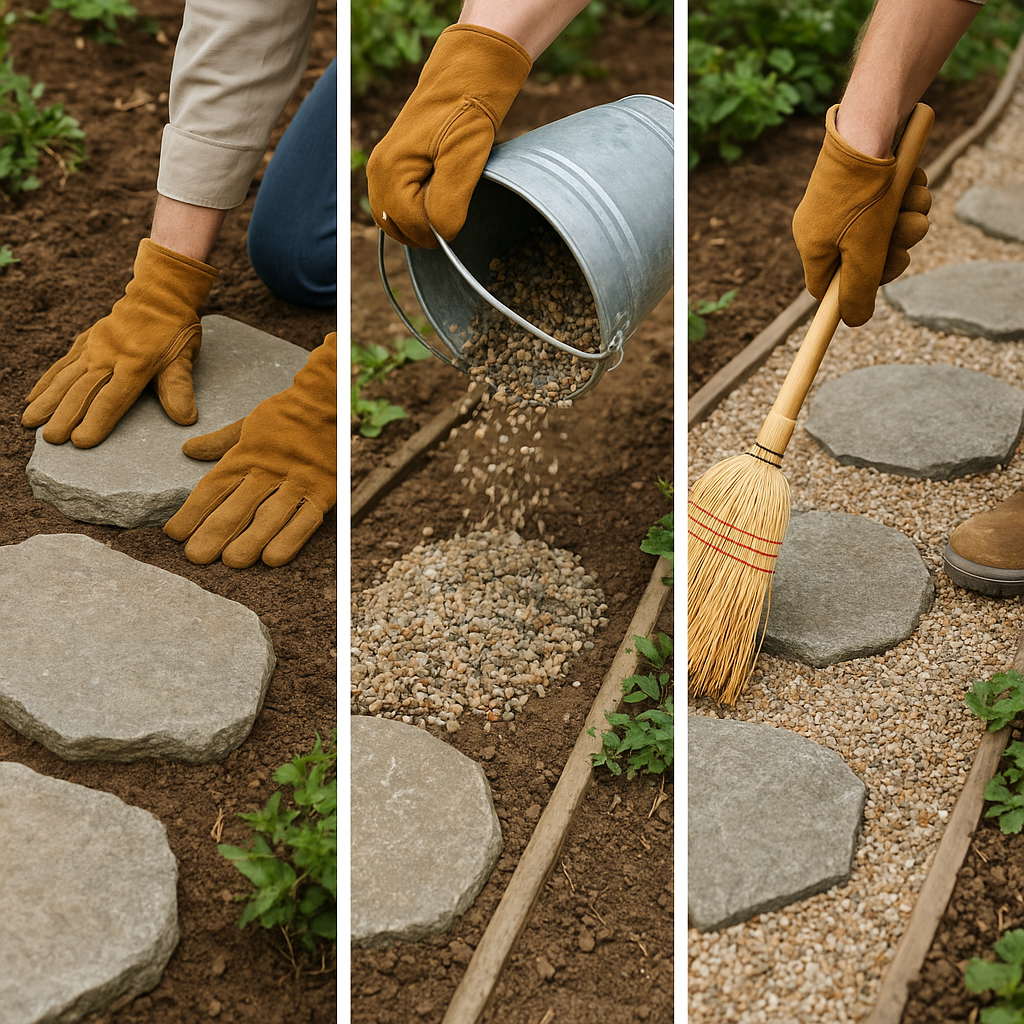
- Place stones in a natural walking pattern
- Dig shallow holes to set stones level with the ground
- Fill gaps with soil, grass, moss, or gravel
Tip: Test the spacing by walking on it before final placement.
4. Brick or Paver Path
Why Choose It?
- Clean, classic look
- Long-lasting and durable
How to Build It:
- Excavate the path area to a depth of 4–6 inches
- Add a gravel base and sand layer for drainage
- Lay bricks or pavers in your chosen pattern
- Fill joints with sand to lock everything in place
Tip: Use a level to keep your path flat and even.
5. Recycled Material Path
Why Choose It?
- Eco-friendly and unique
- Saves money by reusing materials
Ideas:
- Use broken concrete pieces like giant stepping stones
- Install wood slices for a natural woodland path
- Mix materials for a creative, one-of-a-kind walkway
Tools & Materials Checklist
Before you start, gather:
- Shovel and rake
- Landscape fabric (optional, for weed control)
- Chosen path material (gravel, mulch, stones, etc.)
- Edging material (optional for neat borders)
- Level and tamper
- Wheelbarrow for transporting materials
Maintenance Tips for Garden Paths
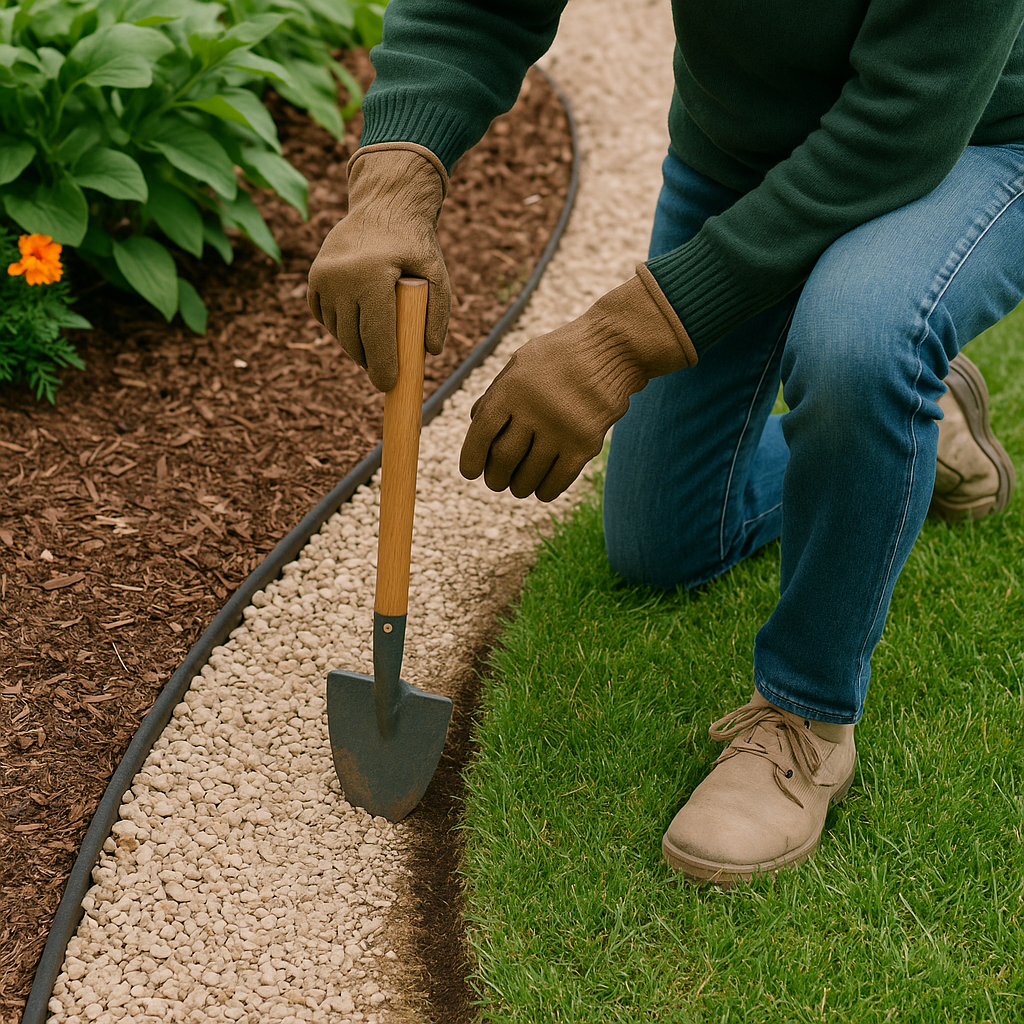
- Top up mulch or gravel as it settles
- Edge your path to keep grass from creeping in
- Sweep brick or paver paths to prevent debris build-up
- Adjust stepping stones if they shift or settle unevenly
Common Mistakes to Avoid
- Skipping base prep: A solid base prevents shifting and sinking
- Using the wrong materials for your climate: For example, wood paths can rot in very wet areas
- Ignoring drainage: Make sure water can flow away, not puddle in your path
- Making it too narrow: Plan for comfortable walking space
Conclusion
Building your own garden path is one of the easiest and most satisfying DIY landscaping projects you can tackle. Whether you go for gravel, mulch, stepping stones, or recycled materials, you’ll create a beautiful walkway that makes your garden more enjoyable and easier to maintain.
So pick your favorite style, gather your materials, and start building this weekend!